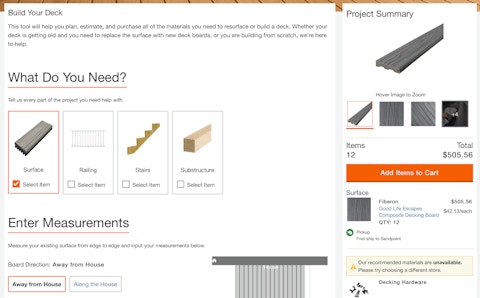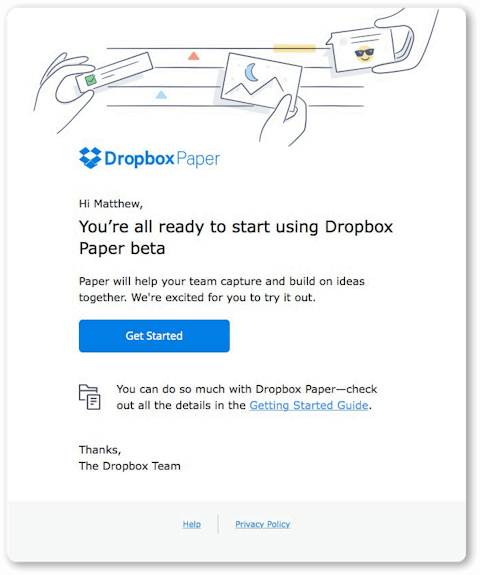Marketing automation is a powerful way for manufacturing companies to stretch resources and improve customer relationships — and all you need is to invest in the right tools, and spend a bit of time up-front setting up strong campaigns.
If you’re looking for creative ways to incorporate automation into your B2B marketing strategy, here are some ideas.
1. Gated Content
Gated content is a highly effective way to automate your marketing output. So long as you create a highly targeted, valuable, and alluring piece of content — be it a white paper or industry report — you can use it to generate leads on autopilot, giving your sales team more to work with.
To set up gated content, you’ll need to spend time determining what resource could be valuable to your target audience and then go above-and-beyond in creating it. From there, make a resource hub and landing page for it to live on and maybe a pop-up to help bring attention to it from elsewhere on your site.
When someone interested in your gated content finds their way to its landing page, all they’ll need to do is enter their email address in exchange for the download. Now, you have a new lead to nurture and they have a high-value piece of content that showcases your company’s niche expertise.
Example:

2. Interactive Tools
Building unique interactive tools for your website is not only a great way to earn quality backlinks and drive organic traffic, but another great way to automate your lead generation techniques. As a manufacturer, these interactive tools can range from basic price calculators to visualization and design tools.
Think about it:
Manufacturing materials cost calculators
Product color and variation visualizers
Price comparison tools across different product lines
Price quote tools based on materials and square footage
While building an interactive tool might be quite involved, depending on your end goal, it is sure to be a long-lasting, high-value addition to your website. But how will you use it to generate leads? In many cases, it’s as simple as adding an email collection form to the final step.
In some cases (such as price quotes), companies require users to enter their email in order to receive the results. You could choose to make it optional instead, prompting them to give their email address if they’d like to receive a copy of the results. In either case, you’re offering value and getting leads in return.
Example:

3. Lead Scoring
Now that you have a couple new techniques for getting leads into your CRM, there’s another marketing automation tactic that you can use within your CRM to help you determine where to focus your efforts. Lead scoring is a native feature in many CRMs for manufacturers, or you may be able to integrate a third-party tool.
The purpose of lead scoring is to automatically evaluate all the leads in your system and score them based on factors like demographic data, purchase history, and behavioral data (like how often they visit your website or whether or not they’ve been opening your emails). Higher scoring leads are more likely to convert into paying customers.
While marketing automation tactics like those to follow can help you nurture all of the leads in your CRM, lead scoring can help your sales team prioritize a list of leads that are worth following up with and engaging on a more personalized, one-to-one basis. That gives you the best of all worlds.
Example:

4. Transactional Emails
While you’re working on growing an email list of leads, take it a step further and invest in an email marketing automation tool so that you can nurture them on auto-pilot and keep existing customers engaged. Transactional emails can take on many forms, and are often triggered by specific behaviors.
Welcome Emails: Whenever someone joins your newsletter, a string of welcome emails can get the relationship off to a good start. Welcome emails can be used to nurture and educate leads, creating value from day one.
Onboarding Emails: If you’ve engaged a new customer or distributor, a series of onboarding emails dripped over the weeks to come can help them learn more about your company, team, values, and catalog. It can also introduce them to your processes and user portal.
Tracking Emails: Invoices, confirmations, and tracking updates can all be automated to create greater transparency for your customers and distributors each time they make a purchase — especially if something is out-of-stock, on back order, or likely to be delayed during shipping. While communicating bad news is tough, communicating it early and often can help you maintain and strengthen your relationships.
Renewal Emails: If you have contracts or other agreements coming up for renewal, your CRM can trigger reminder emails automatically to get those customers talking to your team sooner rather than later. This can improve negotiations and retention rates, while making sure contracts don’t lapse.
Example:

5. Customer Experience Follow-Up Emails
An order has arrived, a support ticket has been resolved, an action has been taken on a contract — these all represent opportunities to follow-up with an account to check-in on their experience and perception of your manufacturing brand.
One easy way to do this is to trigger a net promoter score (NPS) survey, which simply asks “How likely are you to recommend our product, service, or brand to others on a scale of 1 to 10?” If they give a high rating, you can take it a step further by triggering a request for them to leave a review or testimonial for your company.
This type of automation will not only show customers that you care about their experience, but it gives you the chance to collect reviews from happy accounts and quickly intervene for those who express dissatisfaction, potentially saving (and strengthening) the relationship.
6. Email Blasts
New item variations in your catalog? Launching a revolutionary new product you’ve manufactured? Announcing a major sale for the end of peak construction season? Whenever there’s something to announce, an email blast is an easy way to touch base with potential and current customers to let them know. Not only can this prove helpful to those who plan to order again soon, but it also gives you the opportunity to touch base with those who may be disengaging.
With advanced integrations, you can trigger email blasts to occur automatically to your entire list or a segment based on certain events. For instance, you can automatically send a back in stock notification to anyone who routinely orders a certain product, or those who asked to be notified when it was available again.
On the surface, email blasts can be as simple as a notification or reminder, but like all emails, you can truly leverage them to remind recipients what makes your company and its products special. All it takes is some smart marketing copy.
Example:

7. Win-Back Campaigns
You never want to turn your back on disengaged leads and customers, but without marketing automation, it’s simply not feasible to track and follow-up with these accounts on a regular basis. By implementing some smart automation, you can set up win-back campaigns that improve your conversion and retention rates ten-fold.
A win-back campaign can be triggered by a variety of events (or non-events), like a customer not placing an order for so many months or a subscriber not opening the last three to five emails you sent out. Whatever triggers it, a win-back campaign aims to demonstrate that you’ve noticed the user’s absence, and want to give them an option as to how to move forward.
Win-back campaigns often make unsubscribing or adjusting email preferences extremely easy, which can help you avoid going to the spam box while showcasing respect for your subscribers’ time. However, the email should also offer resolutions for potential problems, like the chance to talk to your team in case there’s something getting in their way.
Example:

Save on Costs While Getting More Leads On Autopilot
A lot of marketing automation tactics circle back to your customers’ inboxes, but the fact is automation can take on many forms. It starts with the tools and content you provide on your website to generate leads, and goes all the way through your CRM and integrated toolstack to intelligently trigger campaigns based on intricate patterns of events and behaviors. When done right, it can not only save your team a ton of time, but also give a big boost to your KPIs.
Venveo proudly stands in the gap between companies and digital sales success. Our proven digital growth processes guide your business in finding and connecting with your audience online while compelling them to take action. Contact us to learn more about how Venveo can help your manufacturing company’s online success.








